Lighting in stores: what is the ideal colour temperature for displaying meat, fish, vegetables, bread,…?
The colour of light influences our perception. It even has an effect on our bodies – something that keeps the chromotherapists busy. That's why so much attention is paid to finding the right colour temperature for the lighting in shops.
When we talk about colour temperature, we are talking about the various shades of white light (cool, neutral and warm) and not about coloured light, like red, blue and green light. Colour temperature is expressed in units called Kelvin. The lower the Kelvin value, the redder the light, and the higher the Kelvin value, the bluer the light. Warm white light has a Kelvin value of 2700 to 3000 Kelvin, and cool white light averages around 4500 Kelvin.
1. Red meat
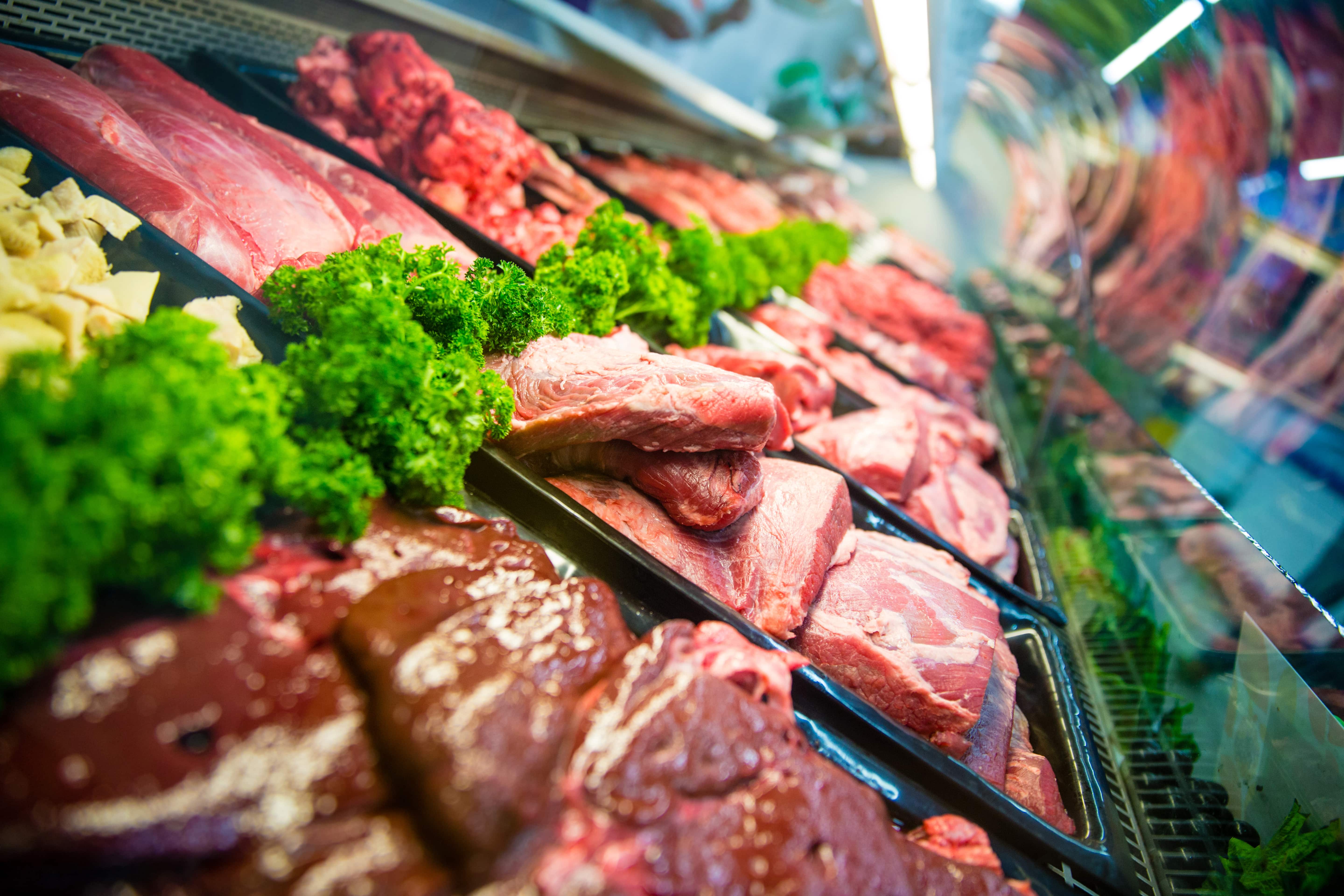
For red meat, it is best to choose light with a warm white colour (2700 to 3000 Kelvin). This light highlights the freshness of meat products because warm white light contains more red shades. Steaks, rack of lamb, minced meat … all look much more appetizing due to the effects of this warm lighting colour. The red, fresh colour of meat is extra accentuated like this. Cool white light, which contains more blue shades, would lend red meat the completely wrong colour - the meat would even appear to be old under the wrong light.
Several years ago, Philips developed the LED Rose Food series with a spectrum optimised for cut meat products. These lamps actually radiate rose-coloured light to emphasise the fresh, red colour of the meat. This way merchants could extend the shelf life of their fresh meat products and, at the same time, reduce waste.
2. Fish (white vs. red)
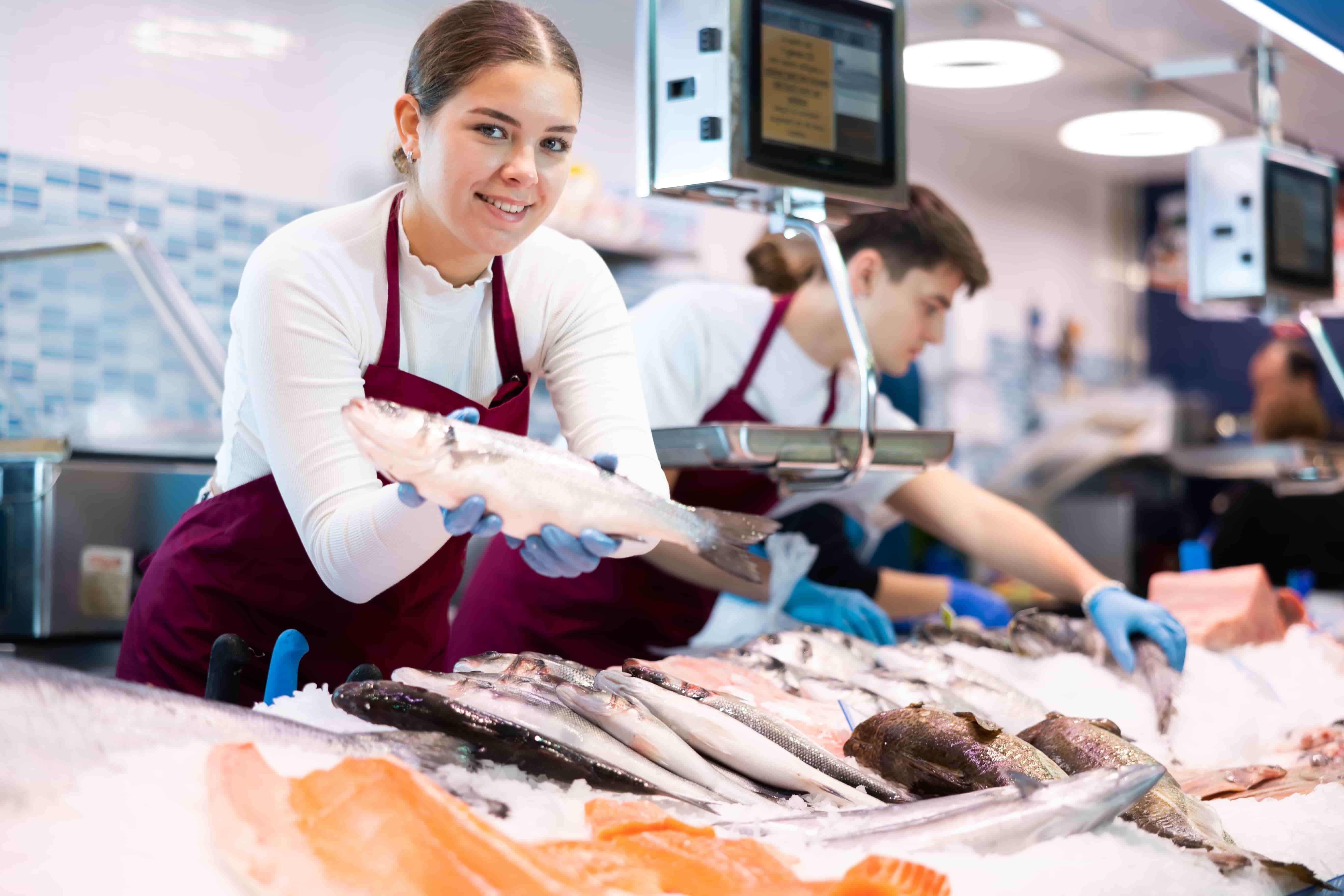
When it comes to fish, we distinguish between white- and red-meat fish. White fish is displayed most advantageously under cool white light. With cool white light, plaice, cod and sole look super fresh. For red fish, such as tuna, a warmer colour temperature is more appropriate. The goal is always to highlight and enhance the natural colour of the product.
3. Cheese, bread and pastries
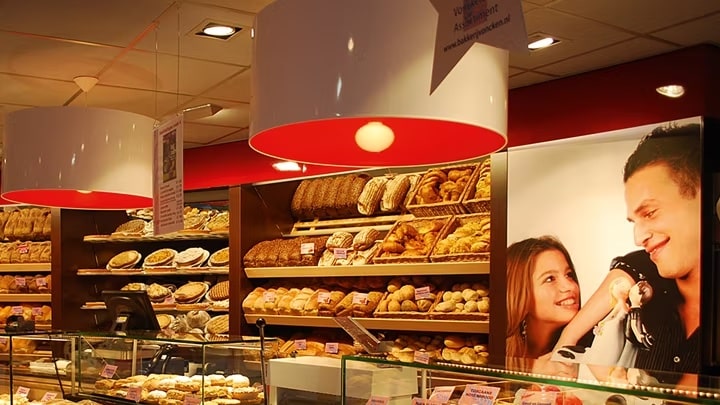
For cheese, light that is just slightly yellow, in other words warm white light, is perfect. This light colour attracts the attention and stimulates the appetite. Warm light is also right for bread. It lends the crust an extra crispy, fresh look. Avoid white light that is too warm - it will make the bread appear too brown and unnatural.
4. Fruit and vegetables
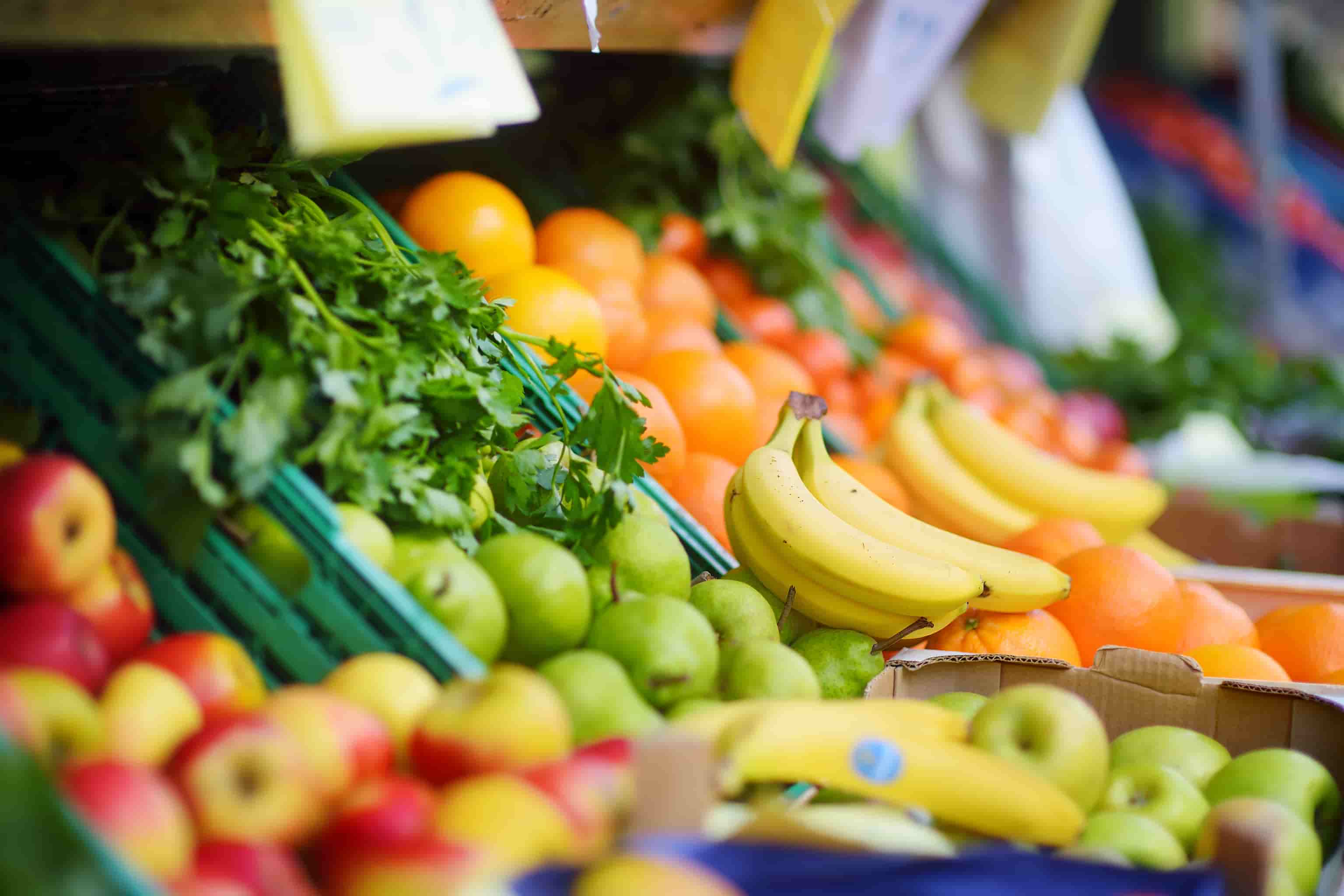
For all types of fruits and vegetables, a light temperature of approximately 3000 Kelvin is recommended. This is the best light to accentuate the bright colours of most types of fruit and vegetables.
Take into account the fact that not all vegetables react similarly to light. It is a good idea to provide high-intensity light above lettuce and other leafy vegetables; this emphasises the bright, green colours. At the other side of this spectrum, though, lie the light-sensitive products – products which, as a rule, grow under the ground - potatoes, onions, asparagus, chicory and mushrooms. These products are best stored in darker conditions to prevent accelerated spoiling.
One more tip: For foodstuffs, such as vegetables, fruit, meat and fish, choose LED lighting. LED lamps do not emit UV radiation and therefore do not cause discolouration. The idea that LEDs do not generate heat is a myth; all light sources produce heat. Although, it is true that with LED lights generate much less heat than halogen lights, so there is much less risk of the food drying out.
Overview table per food category
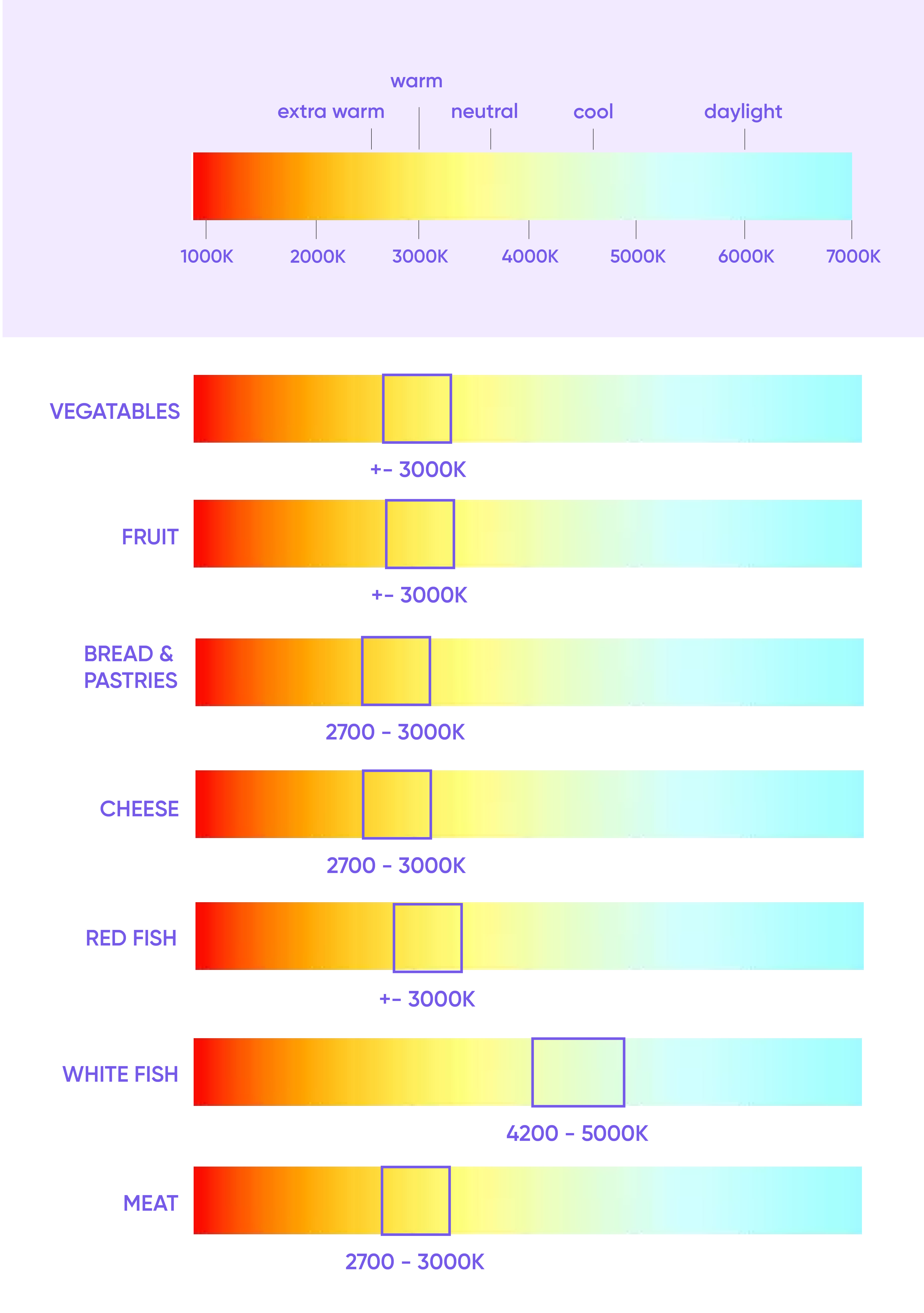
Extra: Clothing
Warm lighting is recommended for clothing shops – especially in the fitting rooms. Light with a warm colour temperature lends visitors a healthy, brown tone. Customers look better, which increases the chance of a sale. Always provide sufficient light - after all, the consumer has to be able to see what he/she is buying.